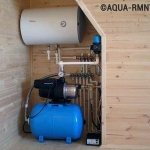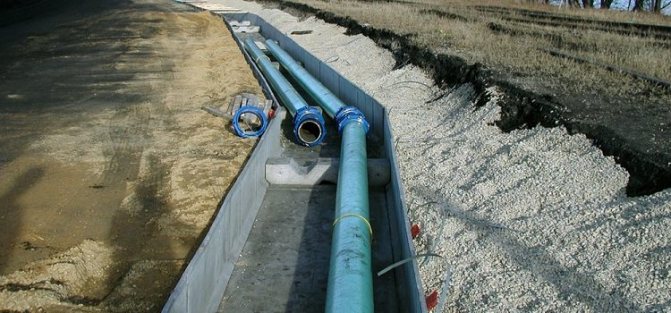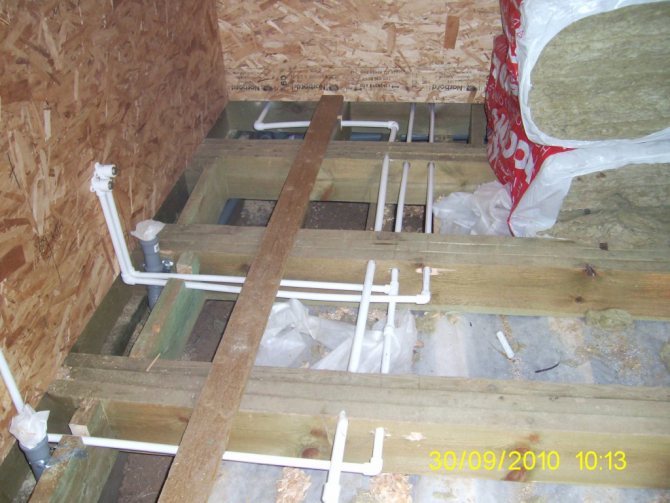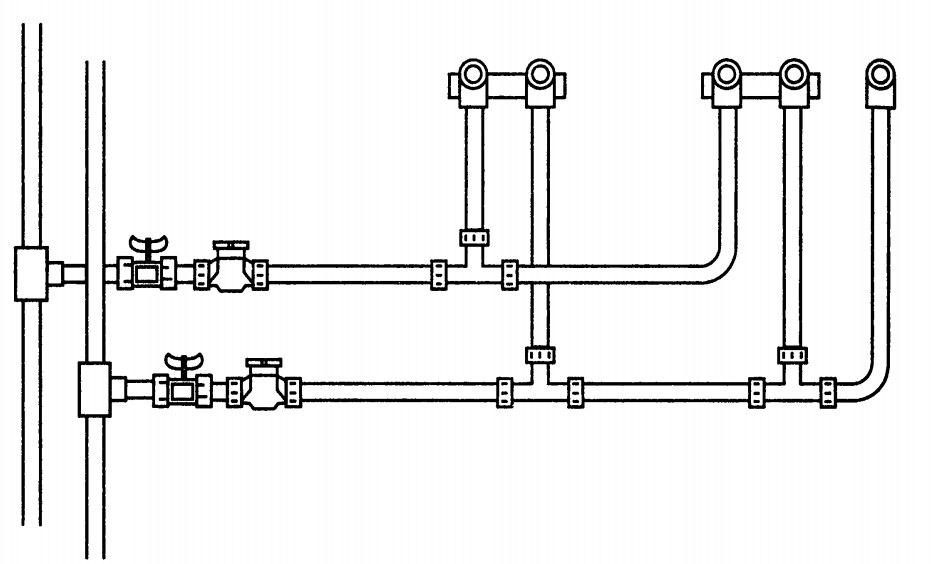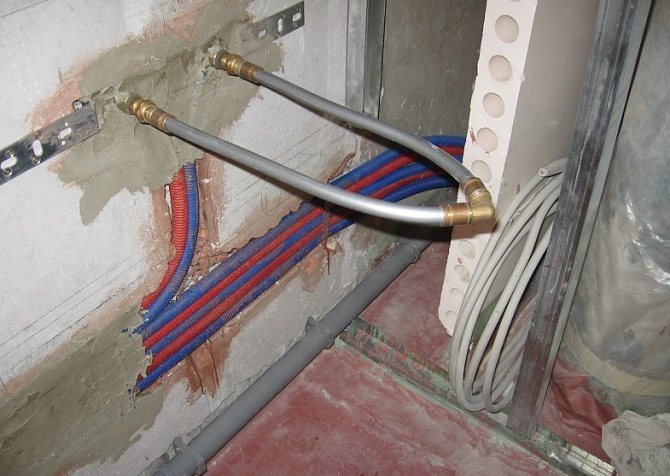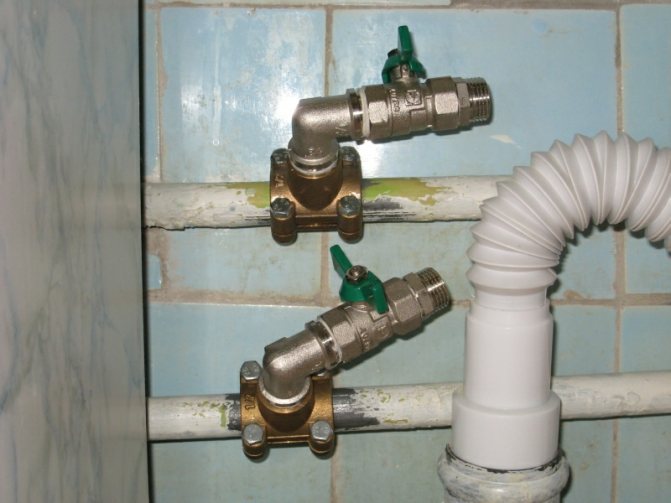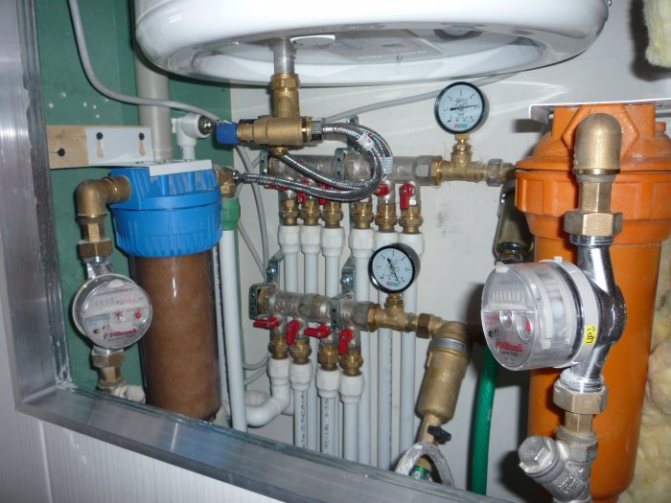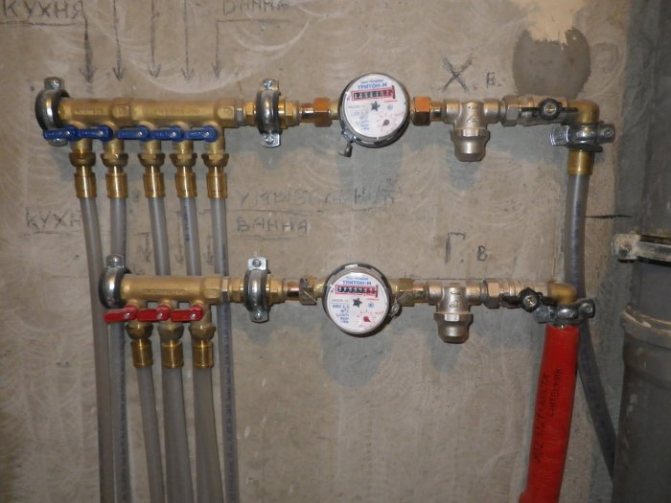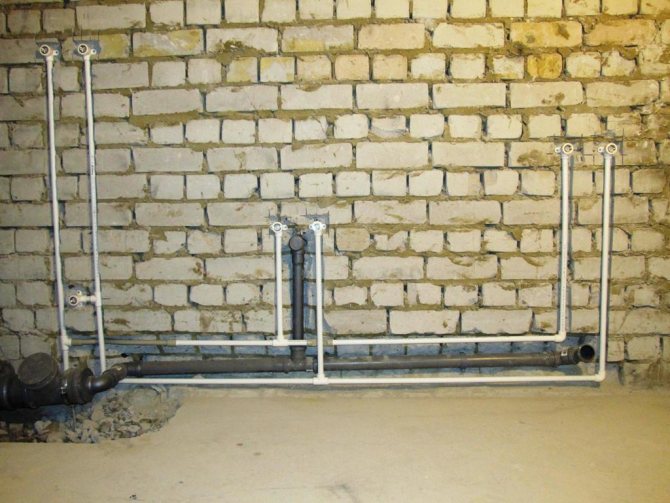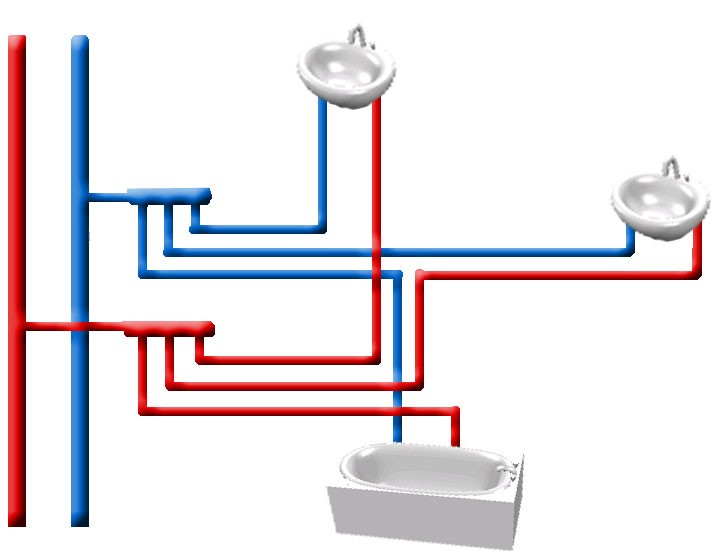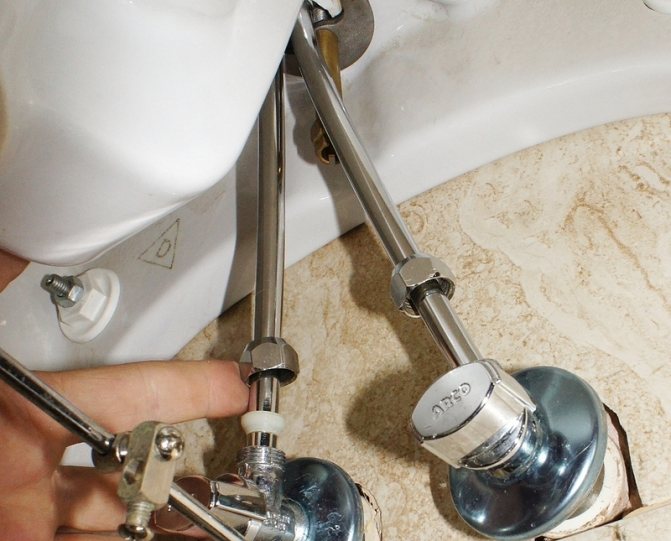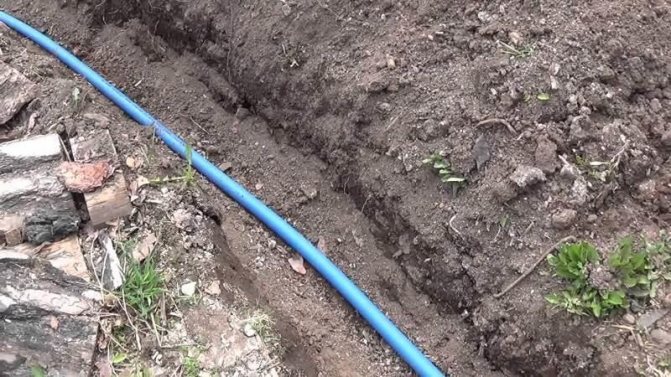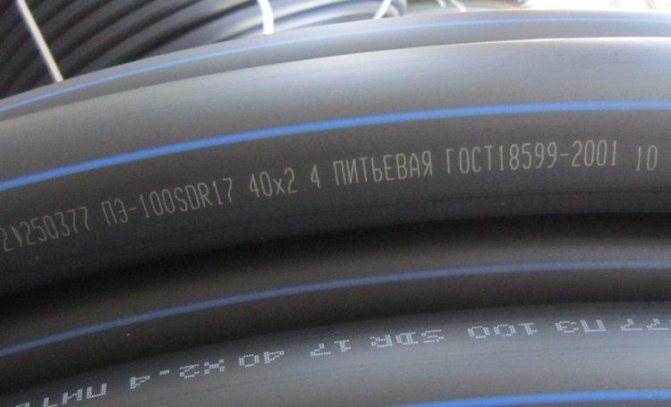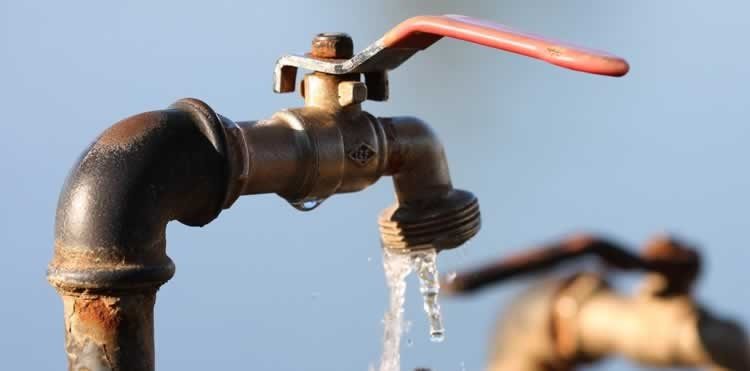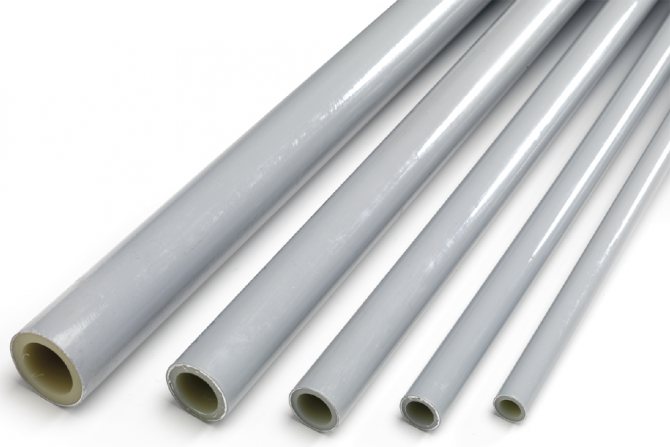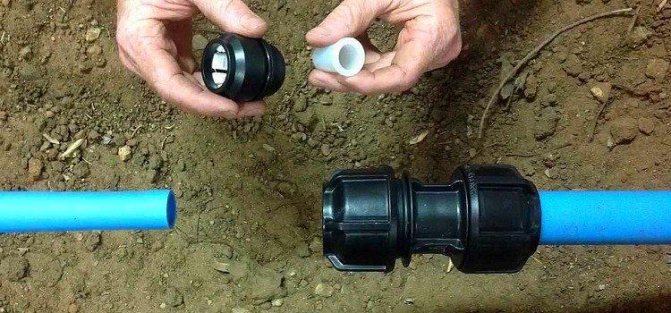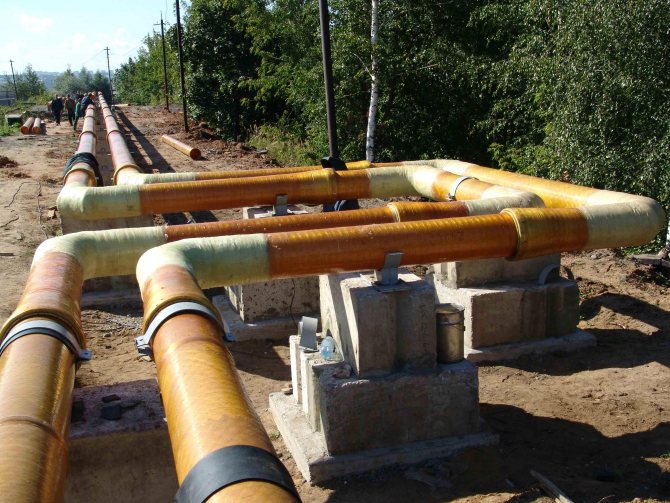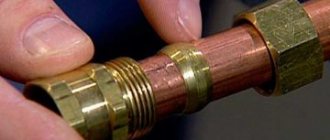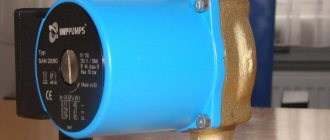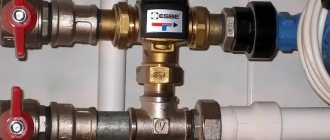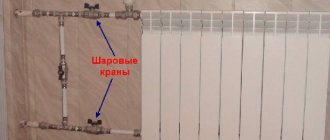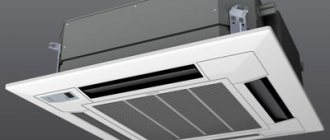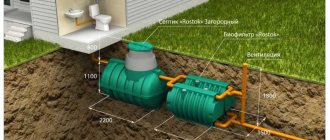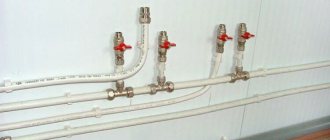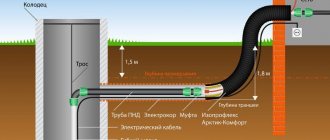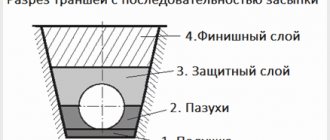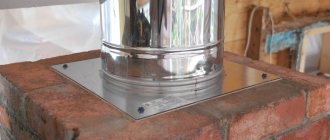Private houses are somewhat different from our usual apartments. On a separate private site, a person does not have access to all those communications that are in the city.
Most often, a private house is completely cut off from communications, except perhaps electricity. The task of laying a water supply system in a private house, its installation and repair falls on the shoulders of the owner.
Water supply pipe with filters in a private house
In this article, we will tell you about how to conduct a water supply system in a private house, what needs to be done to simplify its installation, etc.
What equipment is needed
To conduct a water supply system to a private house from an autonomous source, you need to stock up on the following equipment:
- pumping station;
- hydroaccumulator (a special container into which a sufficient supply of water is pumped);
- a water treatment system installed on a pipe through which water for domestic needs is supplied;
- storage water heater.
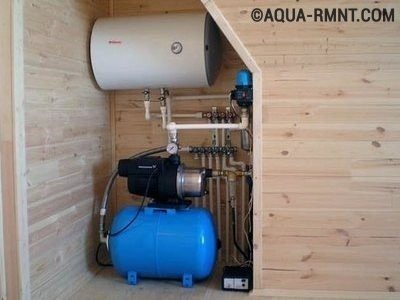
Equipment for providing hot and cold water supply to a private house is compactly located in the basement or any utility room of the facility
Stop valves must be installed in front of all types of equipment used in the system. This will allow you to disconnect devices from the system to repair or replace them without disrupting the water supply to the entire house.
The main nodes of the circuit
The water distribution scheme in a private house, more precisely, that part of it that is responsible for supplying water to the house, consists of the following main units:
- pumping unit for a well or well,
- nipple (adapter),
- non-return valve preventing backflow of water,
- pipeline,
- filtering equipment (one or several different filters depending on the water quality),
- shut-off valves,
- hydroaccumulator,
- five-piece (fitting) for connecting the main elements and devices (pressure gauge, pressure switch, pipes).
Elements of the plumbing system of a country house with a well
How to make a plumbing in a private house with your own hands
Water supply can be organized using two types of pumps:
- surface models, not immersed in the water intake source, provide water rise from a depth of 8-9 meters, therefore they are used in wells;
- submersible models are placed directly in a borehole or well, while their power allows you to raise water to a height of more than 200 meters.
Conducting from the well
A trench is dug from an existing or newly built well to the house, the bottom of which should be below the freezing mark in the area. Further, a 32 mm pipe (copper, steel, polypropylene or metal-plastic) is laid at the bottom of the trench at a slight slope towards the source. The slope is necessary in order to prevent stagnation of water in the pipeline. The pipe is led into the basement through a hole in the foundation, which is insulated. Otherwise, in severe frosts, freezing may occur in this place.
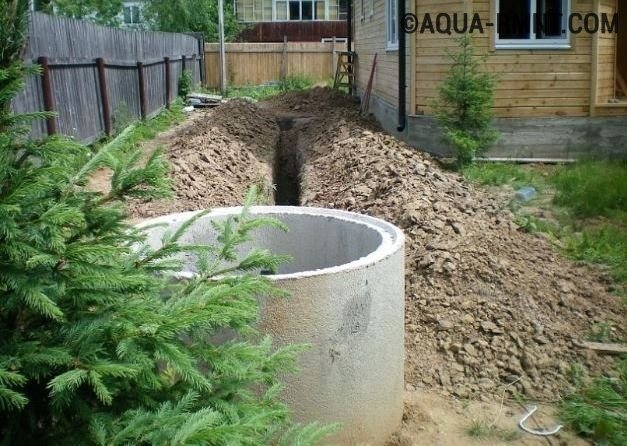

The pipeline running from the well to the basement of a private house is laid in a trench dug taking into account the depth of soil freezing in a given area
From the well
It is also possible to provide water supply to the house from an autonomous source, which is usually a well or a well. It is recommended to use water from open reservoirs only for technical purposes; it is not suitable for drinking and cooking.
Video: how to provide yourself with clean water
The laying of communications from the well, protected from freezing and the ingress of contaminated wastewater by a caisson (metal container), begins with assembling a bundle of cable, a safety cable and a water supply pipe glued with aluminum tape. Then a submersible pump is attached to them and lowered into the well. On the surface, the cord is wrapped with insulation, after which they begin to lay it on the bottom of a one and a half meter trench dug from the well to the house.
Important! The depth of the trench may be different, depending on the degree of freezing of the soil in the area.
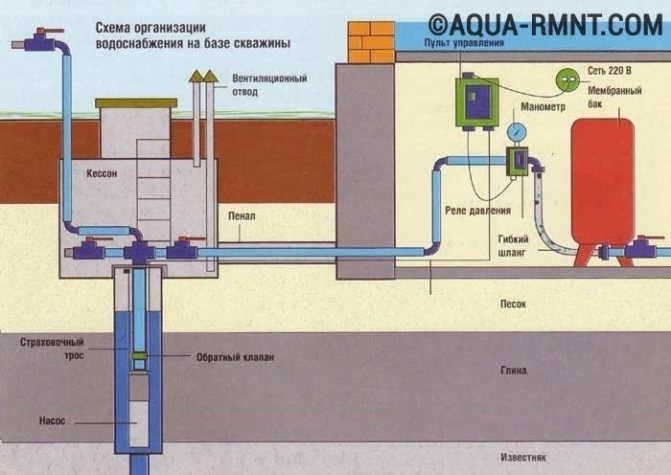

Installation diagram of a private house water supply from a well drilled to the aquifer by a licensed company using a powerful rotary drilling rig
They bring a pipe and cable into the house, then they put:
- a tank that will allow you to turn on the pump as needed;
- control unit designed to protect the system from voltage surges in the network, as well as from overheating.
How to lay a water pipe with a trench method
The trenchless method of laying the pipeline allows you to preserve the landscape design, but is quite expensive. Therefore, a trenchless method is recommended if there are no decorative areas of the landscape on the site.
When the water supply system is underground, it is protected by the soil and does not spoil the landscape design with its appearance. And for this you need to dig a trench from the point of delivery to the point of distribution. Before starting work, you should clear the area and mark the site according to the plan. You can dig trenches with an ordinary soil shovel. However, it will take a lot of effort if the soil is stony. Standard trench widths are 70 - 90 centimeters. Before laying the pipeline, it is necessary to trim the walls of the dug trench and compact the bottom as much as possible. After that, it is covered with river sand with a layer of 10-12 centimeters to create a shock-absorbing cushion.
The trench with the pipeline is filled up with soil that has been removed from it. Stones are removed from the backfill soil so that it is loose. Initially, filling with a seal is performed on the sides of the pipeline, fixing it in a horizontal position. Only then can the entire trench be filled up according to the scheme. It is not recommended to make too sharp corners in the water supply scheme. In these places, the intensity of water movement decreases and deposits form on the walls of the pipeline, which is often the reason for its blockage and a decrease in throughput. Pipeline installation methods
Features of connection to the central highway
If there is a central water supply in the village, it is not difficult to equip a water supply system in a private house. Especially if the highway runs close to the facility. After receiving permission to connect from the organization serving the water supply system, an insert is made within a couple of days in accordance with the technical conditions and estimate documentation. Digging trenches to the required depth is carried out with the help of special equipment, so the excavation takes only a few hours.
Important! The work can be delayed if you have to dig by hand. In some cases, special equipment cannot be used, otherwise the previously laid communications may be damaged.
Next, a pipeline is laid from steel or polypropylene pipes, shut-off equipment is installed in the inspection well and in the house. After the completion of the external work, they proceed to the wiring inside the room according to the scheme.
Internal wiring of draw-off points
The scheme for laying water pipes can be done in two ways:
- serial connection of consumers to the system;
- collector connection.
The first method is recommended for small houses with a small number of water consumers. The system will cope with the needs of one or two residents.With a larger number of residents, inconveniences may arise, since when several points of water intake are simultaneously turned on, the pressure in the system drops. As a result, in the most remote place, the water barely runs.
The second method of installing a water supply system is more complicated, but during operation there are no problems with pressure. Therefore, in cottages, piping is carried out according to the collector circuit.
If the consumer is far away from the pumping station, there will, of course, be pressure losses in the pipeline. However, their quantitative values are an order of magnitude less than the losses when connecting water consumption devices in series.
To independently equip a water supply system, you need to have free time and skills in conducting construction work. If you feel a deficiency of the first or second, then contact the specialists better. Of course, you will have to pay for their work, but you will get the result fast and of high quality. It is not worth saving on the installation of the system, because this is a long-term investment that ensures the comfort of living in a private house.
aqua-rmnt.com
How to ensure good water pressure
For the normal operation of plumbing and household appliances, a certain water pressure must be maintained in the pipeline. To achieve a sufficient pressure level in the pipeline, a water tank or a hydraulic accumulator is installed in the attic. A water intake is installed in the well, equipped with a filter mesh and a check valve. The water supply to the system is organized using a pump that can automatically turn on when the pressure drops and turn off when the value of this parameter is restored.
When calculating the volume of a water tank, it is assumed that for each person permanently living in a private house, 50 liters per day are required. In addition, a supply of water is laid to extinguish a possible fire. When choosing a hydraulic accumulator, the volume is calculated taking into account the fact that each valve should have 20 liters of flow per day.
Criterias of choice
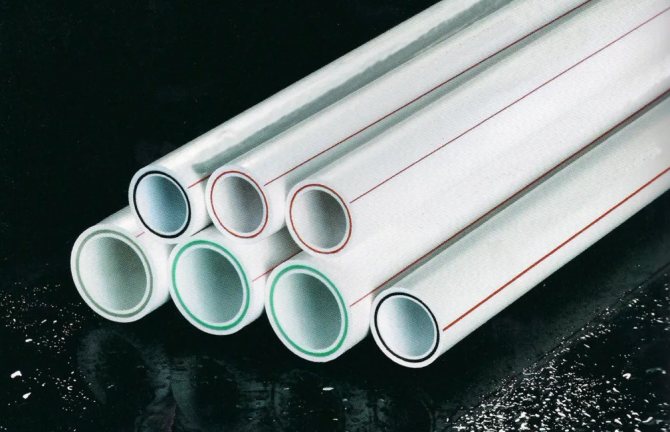

When choosing a plastic pipe, you need to take into account its characteristics and operating temperature range
Pipe products for external water supply must comply with the following indicators:
- Quality. The pipes are manufactured in accordance with technical standards. Products should have a flat, smooth surface, without pits, creases or bulges.
- Reliability. Highways need resistance to mechanical stress, the ability to withstand high pressure.
- Environmental friendliness and safety for human health and the environment. The pipe material must not adversely affect the quality of drinking water.
- Durability. The material of the product must be resistant to wear and tear, the influence of bioprocesses - corrosion, decay, rodents and mold.
- Resistance to sudden temperature changes and immunity to soil freezing. Even a pipe with good insulation will undergo constant thermal deformation, which should not affect its performance.
All these criteria are fully met by polypropylene, metal-plastic and copper products. However, the installation of PVC and polyethylene water supply lines is also possible, taking into account the characteristics of the materials.
It is undesirable to install PVC pipelines in hard, rocky soils by trenching. They will have to be stacked in sleeves. With this type of soil, it is better and easier to use metal-plastic.
When buying plastic products, you need to pay attention to the marking of the pipe. For underground pipelines, the best option is PN10. PN6 models are cheaper, but do not meet the specified requirements in terms of properties.
According to state standards, products with a diameter of 32 mm and a length of 240 cm are suitable for external work. But you can buy flexible pipes of greater length, packed in coils.
When selecting water pipes, carefully inspect the surface. It should be even, free from scoring and other defects. Any scrap indicates poor quality material or the use of worn out equipment. Also, at your request, the seller must provide documents that confirm the quality of the products and their compliance with SanPin standards. It should clearly state that the pipe sections can be used for drinking systems.
How it works and tips
In order for the system to work flawlessly, it is important to know how to carry out a water supply system in a private house with your own hands correctly. This concept can include both the basic principles regulated by building codes and regulations, and some of the nuances and subtleties known to experienced craftsmen.
- Ideally, the pipeline should not pass through building structures, however, in practice, the creation of such a scheme is often impossible or impractical. If it is necessary to conduct communications through the wall, the pipe must be placed in a protective glass.
- Despite the fact that the owner of the house almost always wants to get the maximum free space and for this to "press" the pipeline against the wall, there must be a gap of at least 25 mm between the building structures and the communications running parallel to them for easy repair work. The tracing of the inner corner requires a distance of 40 mm and the outer corner 15 mm.
- If there are drain taps on the pipelines or the accumulator, a slight slope is made in their direction.
- The most convenient way to fix the pipeline to the walls is with special clips. You can choose single or double fixtures, the distance between them in any case should be about 2 meters.
When deciding how to make water distribution in a private house, remember that a well-executed internal water supply system has characteristic differences:
- Minimum of joints and adapters. This improves the reliability and economy of the system.
- All connections are made in strict accordance with the installation technology of this particular type of pipes.
- The presence of valves or shutoff valves in critical areas of the system and at connection points.
- The minimum number of not too reliable flexible connection sections (hose lines), which are most vulnerable to pressure drops.
okanalizacii.ru

